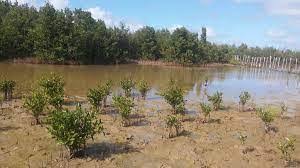Roman Romero Lopez
With one of the areas of prioritized attention defined in the country, the Avilanian municipality of Morón maintains as a priority the execution of the Cuban State Plan to Confront Climate Change (Task Life), with the purpose of reducing vulnerabilities in future scenarios.
The Master of Science Zulima Díaz Montes, main specialist of the Territorial Delegation of the Ministry of Science, Technology and Environment (Citma), highlighted the responsibility they assume when implementing mitigation and adaptation actions to climate change (CC) in the northern keys of Ciego de Avila. , an area with valuable natural resources and importance for the development of tourism.
Among the tasks carried out during the seven years of the Life Task, the dumping of sand that favored the recovery of more than 10 kilometers of beaches distributed between the Guillermo, Coco and Paredón Grande keys stood out; in addition to the execution of a project to rehabilitate coastal dunes in Jardines del Rey.
These actions make important contributions to the preservation of the ecosystem by reducing erosion in coastal areas and the risks of damage due to the probable occurrence of extreme hydrometeorological events.
Díaz Montes represented the project dedicated to reestablishing the sand mounds, led by the Center for Environmental Engineering and Biodiversity (Ciba) and as part of which technical actions have been developed such as the planting of native plants and the extraction of other invasive exotics.
This initiative also ventures into the training of workers in hotel, non-hotel and tourism support facilities, with the aim of providing knowledge for efficient management of coastal ecosystems and increasing the perception of risks associated with CC.
The main Citma specialist in the territory of Morón alluded to the strength represented by the execution in Jardines del Rey of an international project that promotes sustainable tourism, aimed at integrating the conservation and sustainable use of biodiversity and CC mitigation in vulnerable marine-coastal areas, through the design and establishment of innovative models with strengthened capacities and financial mechanisms.

